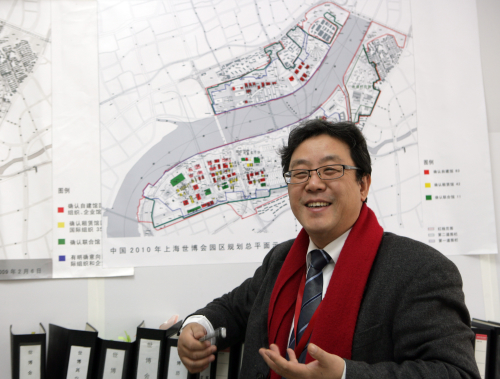After the Expo's final curtain
All big international event organizers have a headache trying to figure out what to do with old facilities and venues, such as stadiums, pavilions and the like, once the event is over. High maintenance costs usually pose severe financial burdens for host cities. Will the 5.28-square-km Shanghai Expo Park face a similar problem? Expo Weekly reporter Wang Xinling talked to Wu Zhiqiang, Chief Planner of the Shanghai World Expo and Dean of the College of Architecture and Planning at Shanghai's Tongji University.
| Wu zhiqiang [IC] |
Expo Weekly: What do you think are successful examples of post-Expo facility use?
Wu Zhiqiang: The Expo Parks in Spain, Germany and Portugal were designed into science and technology parks and national exhibition centers after the Expo, which are successful examples we should learn from. I believe the Shanghai Expo Park will also be a successful case. As early as its planning stage, the Shanghai World Expo took into consideration the city's future, the future of all Chinese cities and successful global cases of urbanization. The theme "Better City, Better Life" made us aware of the importance of planning for the future of the site at an early stage.
The Expo Axis, the China Pavilion, the Theme Pavilion, the Expo Culture Center and the Expo Center will be retained after the Expo. How will they be used in the future?
If we had left this question to the present moment to answer, it would already be too late. I have visited many Expo venues and few of them could be called successful. Shanghai's Expo Park has already planned its utilization for the next two decades. In this sense, it is an unprecedented breakthrough in the history of the Expo.
The Gourmet Plaza located between the Expo Center and the Theme Pavilion is the appointed location for a hotel which will serve as part of Asia's biggest international exhibition center in the future together with the Expo Center, the Theme Pavilion and the China Pavilion. In my view, the most promising planning must be sustainable. We have learned that a municipality like Shanghai must possess a total exhibit area of 600,000 square meters. Now we only have 400,000 square meters; but the Expo Park-turned-exhibition center in the future will make up for the missing 200,000 square meters. It is true to say that the Expo Axis and the four pavilions around it were built for the Expo, but they also were intended to serve Shanghai's needs as a major exhibition city.
What will be the other highlights of the Expo Park after the Expo?
All the roads today in the Expo Park will be urban roads and no road will be torn up. The Expo Culture Center will be a perfect venue to hold great international shows and the Expo Center will be an international convention center. Shanghai does not have a museum of Chinese history and the China Pavilion will play that role.
We have seen this place beautifully serve as an Expo Park; in the future, it will surprise us by becoming a new center of the city. Some day we will find that Shanghai will become more beautiful as a result of successful utilization of the Expo Park. How amazing that will be!
The Expo has many wonderful pavilions that have fascinated visitors from around the world. Some say they should be kept after the Expo. What is your view?
We have had a thorough discussion whether pavilions should be kept or not. The answer is no. Historically speaking, some pavilions have remained after the Expo, but they were finally demolished several years later because they are not designed to be permanent.
According to the Bureau of International Expositions, the 42 national pavilions designed and built by countries themselves are temporary buildings and must be demolished after the Expo. We have to observe the rules.
Everyone who has been involved in the Expo must have a feeling for those pavilions. They are like our children and are the fruits of years of hard work. Emotionally speaking, we do not want to see them pulled down.
Shanghai is a young city and still in the process of growing up. It is too early to say which architecture will be a classic or landmark. Who knows whether popular pavilions today would stand the test of time in the future?
What will happen to the space after the pavilions are removed?
The removal cannot be finished in one day. The demolition will be a long process. If the construction of pavilions is a part of the Expo, why not the demolition? In fact, I would rather give the demolition a new name – transformation. In the past we transformed the Jiangnan Shipyard into Expo pavilions. So why can't we transform pavilions into a museum in the future? In my view, good transformation is more important than good construction. The Chinese people are wise enough to deal with this problem.
 0
0 







